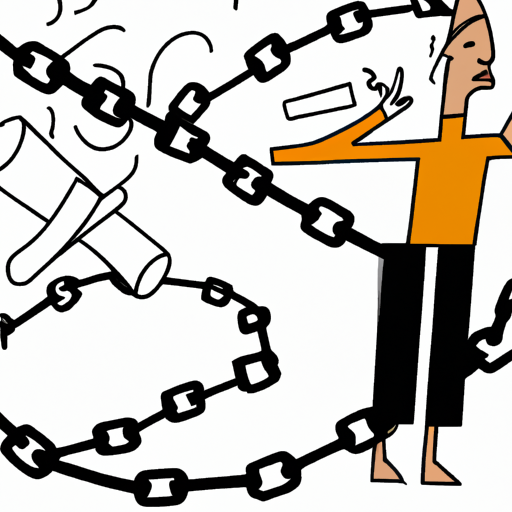Nicotine addiction is a prevalent and complex issue that affects millions of people worldwide. Whether it stems from smoking cigarettes, using e-cigarettes, or other tobacco products, nicotine addiction can have severe consequences on both physical and mental health. This article aims to provide a comprehensive understanding of nicotine addiction by exploring its symptoms, causes, and diagnosis. Additionally, it will delve into effective treatment strategies that can help individuals break free from this addiction. Lastly, it will examine the various factors that influence nicotine addiction and recovery, shedding light on the complexities surrounding this pervasive issue. By delving into these crucial aspects, this article seeks to educate and empower individuals to make informed decisions about their own health and well-being.
1. Understanding Nicotine Addiction: Symptoms, Causes, and Diagnosis
Nicotine addiction is a complex issue that affects millions of people worldwide. Understanding the symptoms, causes, and diagnosis of nicotine addiction is crucial for both individuals dealing with the addiction and healthcare professionals providing treatment and support.
Symptoms of nicotine addiction can manifest in various ways. One of the most common signs is an intense craving for nicotine, which leads to an increased dependence on tobacco products. Individuals may find it challenging to quit or cut back on their tobacco use despite having a desire to do so. Other symptoms may include irritability, restlessness, difficulty concentrating, increased appetite, and experiencing withdrawal symptoms when attempting to quit.
The causes of nicotine addiction are multifaceted. Nicotine, a highly addictive substance found in tobacco products, stimulates the release of dopamine in the brain, creating a sense of pleasure and reward. This pleasurable experience reinforces the behavior and leads to continued use of tobacco products. Additionally, various psychological, social, and genetic factors can contribute to the development of nicotine addiction. Stress, peer influence, mental health conditions, and a family history of addiction can all play a role in increasing the risk of nicotine addiction.
Diagnosing nicotine addiction involves assessing both the physical and psychological aspects of the addiction. Healthcare professionals may use various tools, such as questionnaires, interviews, and physical examinations, to evaluate the severity and impact of nicotine addiction on an individual’s life. They may also consider the presence of withdrawal symptoms and unsuccessful attempts to quit as diagnostic criteria. It is important for individuals to be open and honest with their healthcare providers about their tobacco use and any challenges they face in quitting.
Once diagnosed, treatment for nicotine addiction can take different forms. Behavioral interventions, such as counseling and support groups, can help individuals develop coping strategies and address the underlying reasons for their addiction. Medications, such as nicotine replacement therapy or prescription medications, may also be recommended to aid in nicotine withdrawal and reduce cravings. Combining behavioral interventions with medication has shown to be the most effective approach to treating nicotine addiction.
In conclusion, nicotine addiction is a complex issue with various symptoms
2. Breaking Free: Effective Treatment Strategies for Nicotine Addiction
Breaking Free: Effective Treatment Strategies for Nicotine Addiction
Nicotine addiction is a complex condition that requires a comprehensive approach for successful treatment. While quitting smoking or using tobacco products may seem challenging, it is not impossible. Various treatment strategies have proven to be effective in helping individuals break free from nicotine addiction and achieve long-term recovery.
1. Behavioral Counseling:
Behavioral counseling is a fundamental aspect of nicotine addiction treatment. It helps individuals understand their addiction, identify triggers, and develop healthier coping mechanisms. Through counseling, individuals can learn strategies to manage cravings, build resilience, and modify their behavior towards tobacco use. There are different types of counseling available, including individual counseling, group therapy, and support groups, all of which provide a supportive environment for individuals to share their experiences and learn from others.
2. Medications:
Medications can significantly enhance the success rate of quitting smoking. Nicotine replacement therapy (NRT) is one commonly used treatment strategy that aims to reduce withdrawal symptoms by providing the body with nicotine through less harmful means, such as nicotine patches, gum, or inhalers. Other medications, such as bupropion and varenicline, can also be prescribed to help reduce cravings and alleviate withdrawal symptoms.
3. Cognitive-Behavioral Therapy (CBT):
CBT is a form of therapy that focuses on changing negative thought patterns and behaviors associated with addiction. It helps individuals develop strategies to cope with triggers, stress, and cravings. CBT equips individuals with skills to identify and challenge their thoughts, enabling them to make healthier choices and maintain long-term abstinence from nicotine.
4. Motivational Interviewing:
Motivational interviewing is a technique used by healthcare professionals to help individuals find motivation and build confidence in their ability to quit smoking. It involves a collaborative and non-confrontational approach, where individuals are encouraged to explore their reasons for quitting and set achievable goals. By highlighting the benefits of quitting and addressing ambivalence, motivational interviewing can increase an individual’s readiness to change and commit to a tobacco-free lifestyle.
5.
3. Exploring the Complexities: Factors Influencing Nicotine Addiction and Recovery
Nicotine addiction is a complex issue that involves various factors influencing both addiction and the recovery process. Understanding these complexities is crucial in developing effective strategies for diagnosis, treatment, and prevention. Let’s explore some of the key factors that contribute to nicotine addiction and influence the recovery journey.
1. Biological Factors:
Biological factors play a significant role in nicotine addiction. Nicotine affects the brain’s reward system by releasing dopamine, a neurotransmitter associated with pleasure and reinforcement. Over time, the brain becomes dependent on nicotine to maintain normal dopamine levels, leading to addiction. Genetic predispositions also play a role in determining an individual’s vulnerability to nicotine addiction.
2. Psychological Factors:
Psychological factors, such as stress, depression, anxiety, or other mental health conditions, can contribute to nicotine addiction. Many individuals turn to smoking as a coping mechanism, using nicotine to alleviate negative emotions or manage stress. Additionally, certain personality traits, like impulsivity or sensation-seeking behavior, may increase the risk of developing nicotine addiction.
3. Social and Environmental Factors:
Social and environmental factors can strongly influence nicotine addiction. Peer influence, especially during adolescence, is a significant factor in initiating smoking behavior. Social norms, cultural acceptance, and exposure to smoking in the community or household can also contribute to the development and maintenance of addiction. Similarly, exposure to smoking cues, such as seeing others smoke or encountering smoking-related environments, can trigger cravings and hinder recovery efforts.
4. Nicotine Delivery Systems:
The method of nicotine delivery can have an impact on addiction and recovery. Traditional cigarettes, e-cigarettes, and other tobacco products all deliver nicotine to the body, but the speed and intensity of nicotine absorption may vary. For instance, e-cigarettes, with their higher nicotine concentrations, can potentially increase the risk of addiction due to their efficient nicotine delivery system.
5. Co-occurring Substance Use Disorders:
Nicotine addiction often co-occurs with other substance use disorders, such as alcohol or drug addiction. The presence of multiple addictions can complicate the recovery process and make it more challenging to quit smoking


